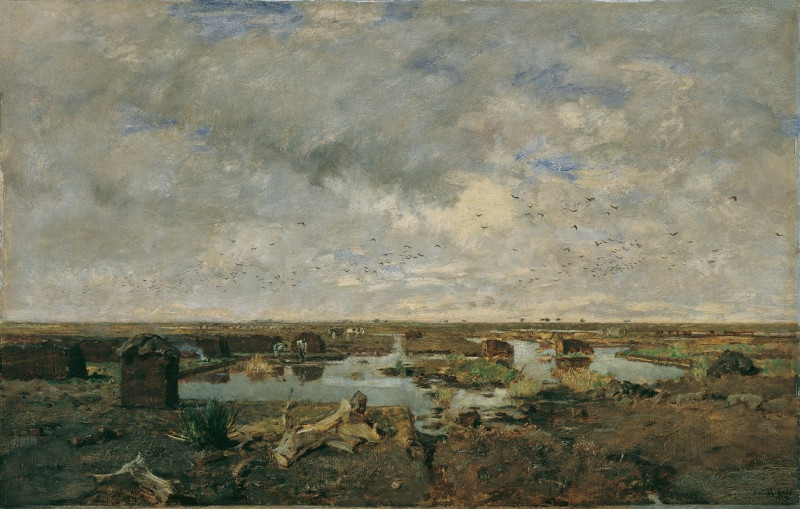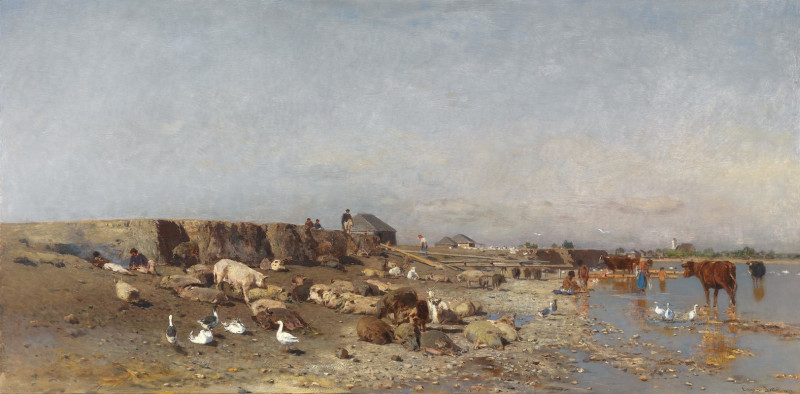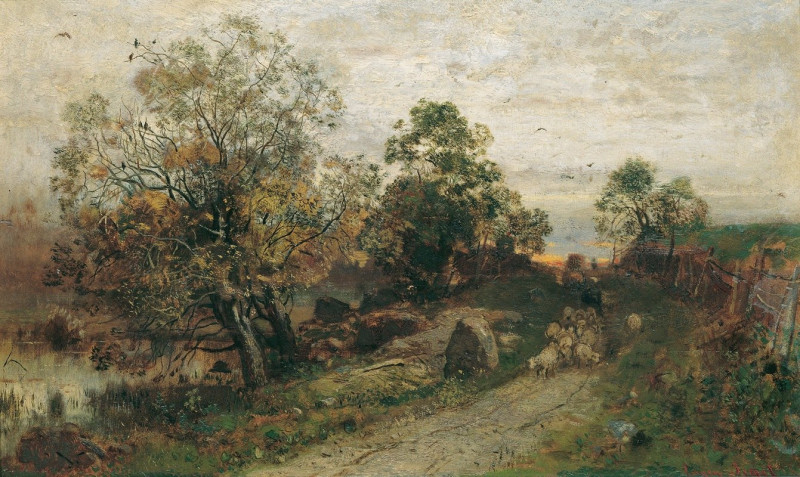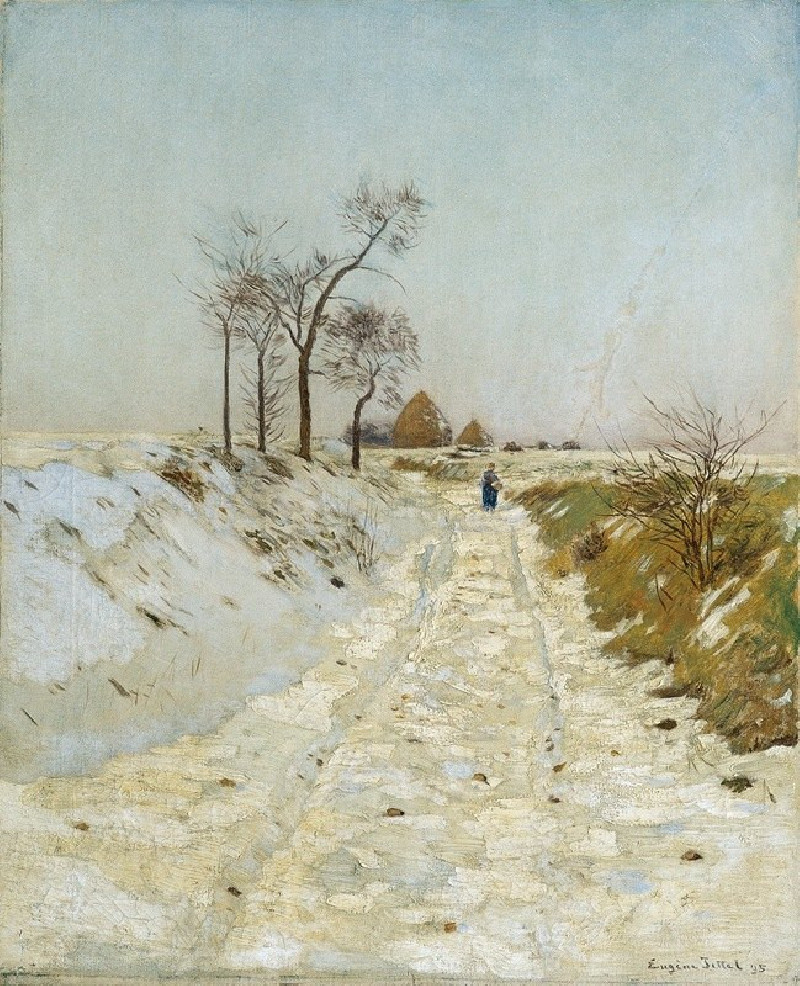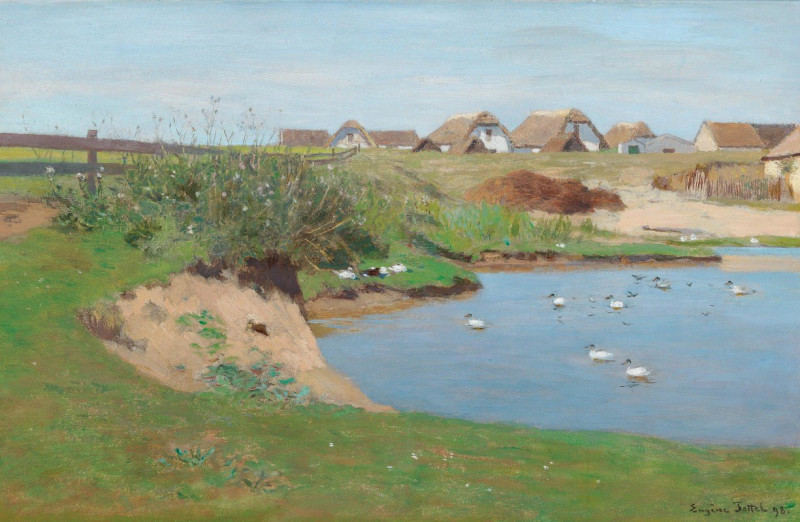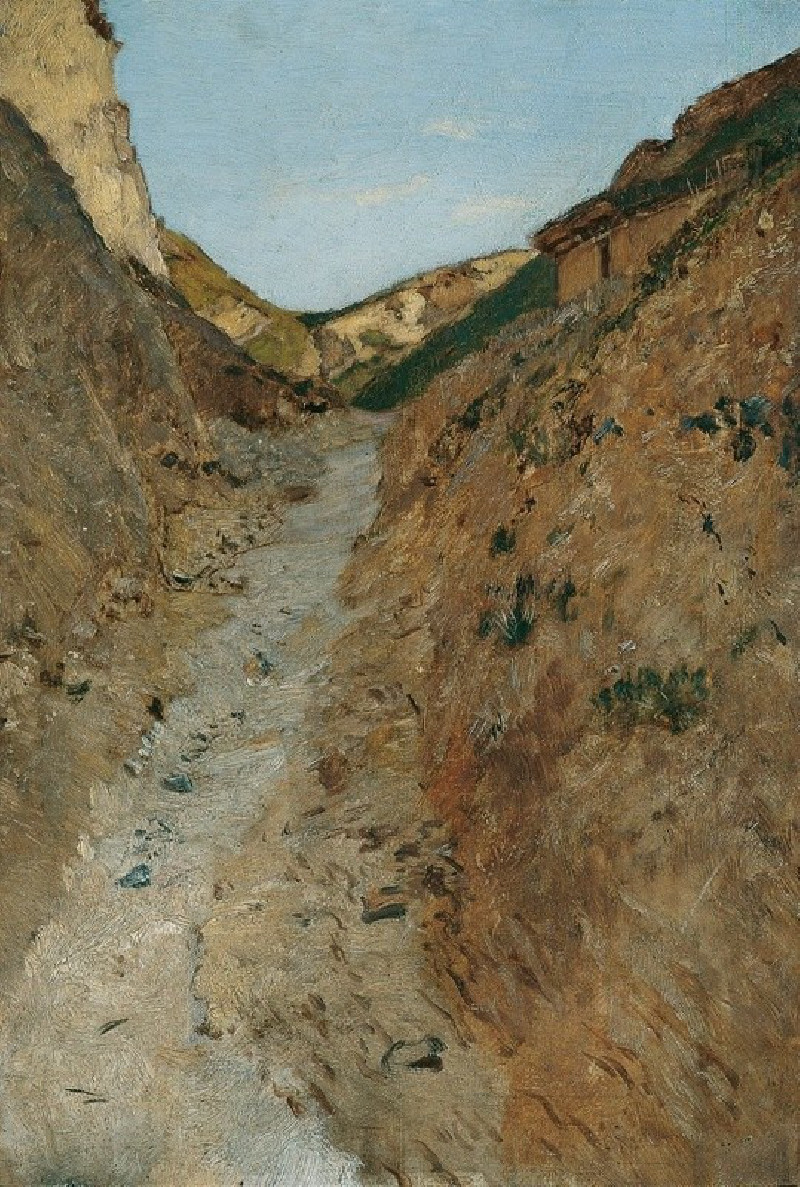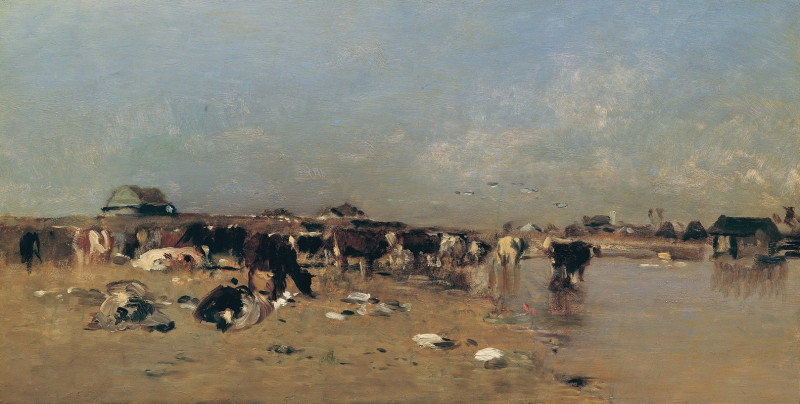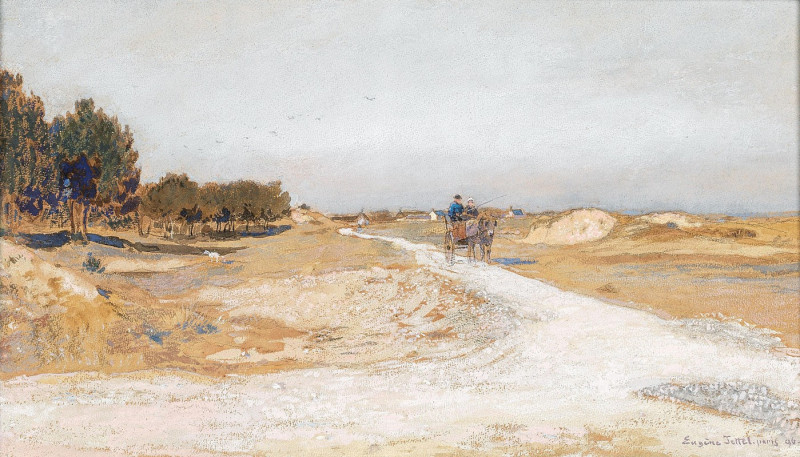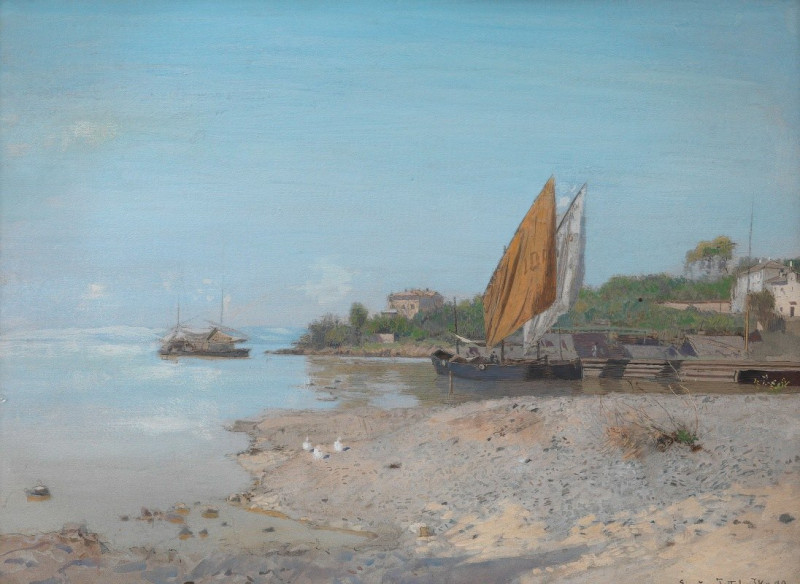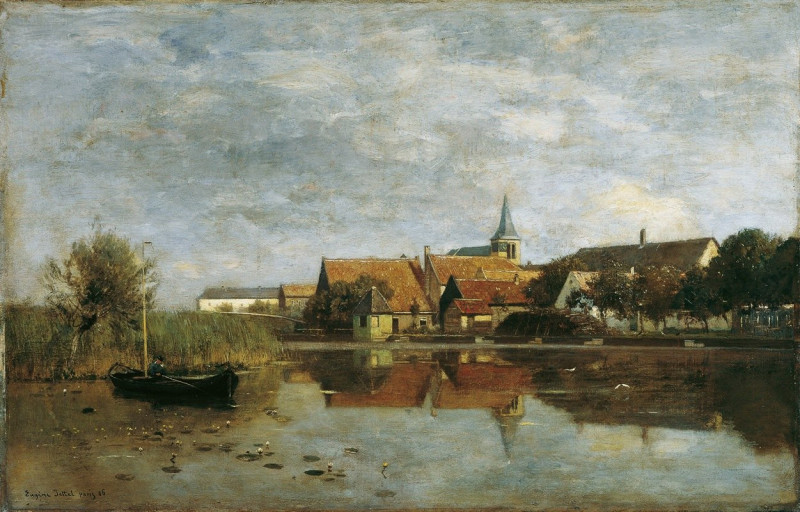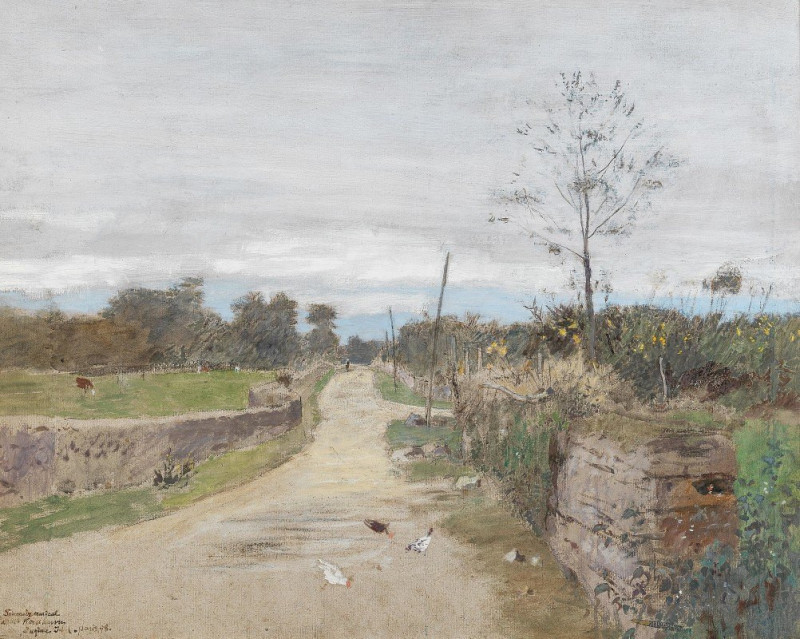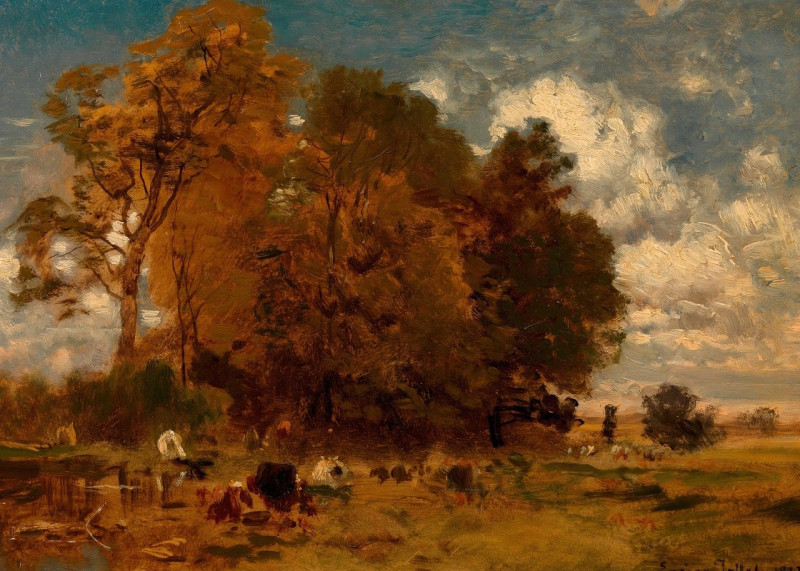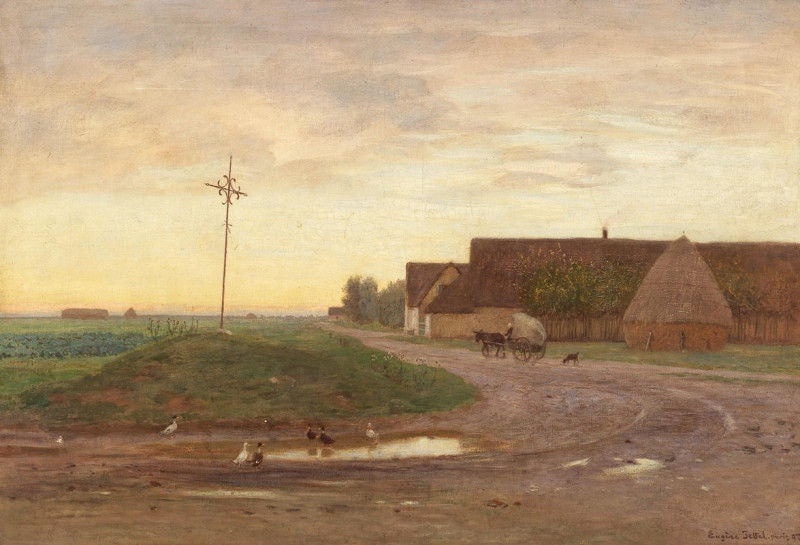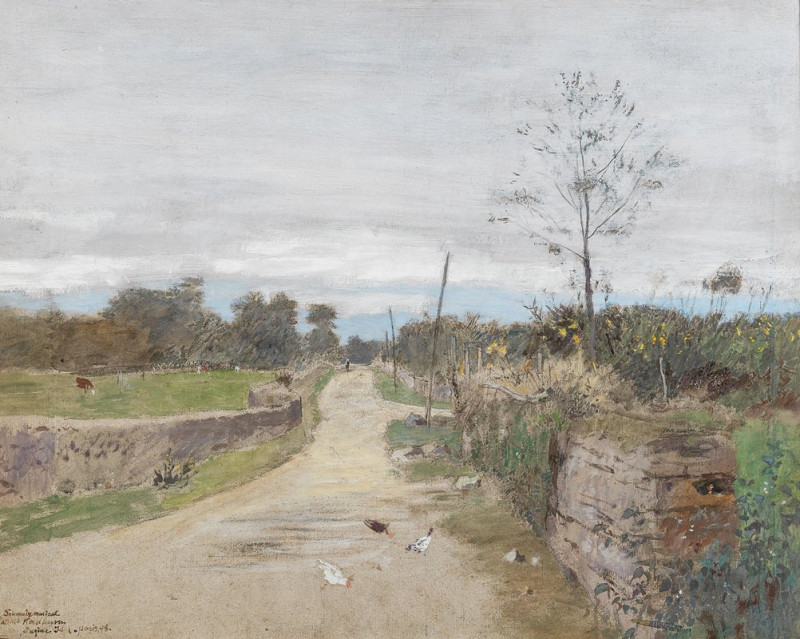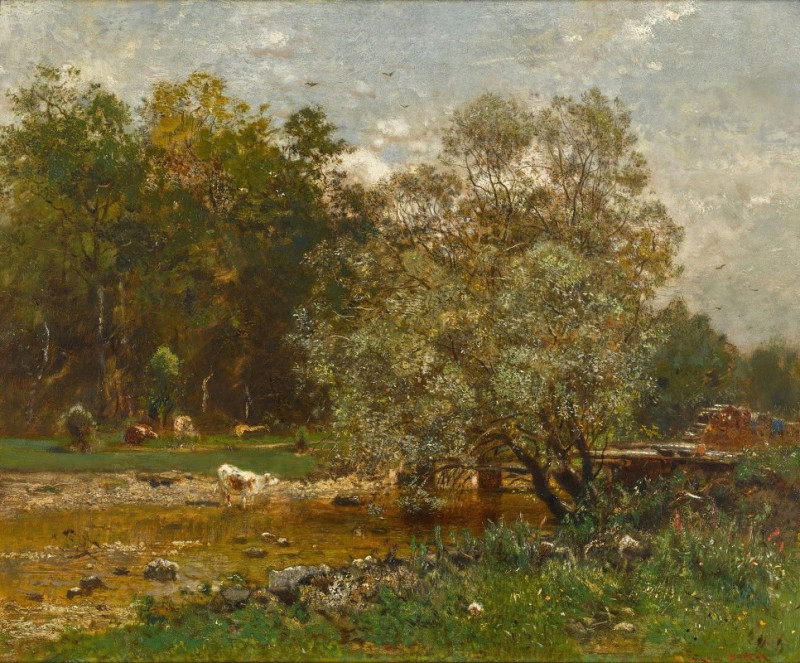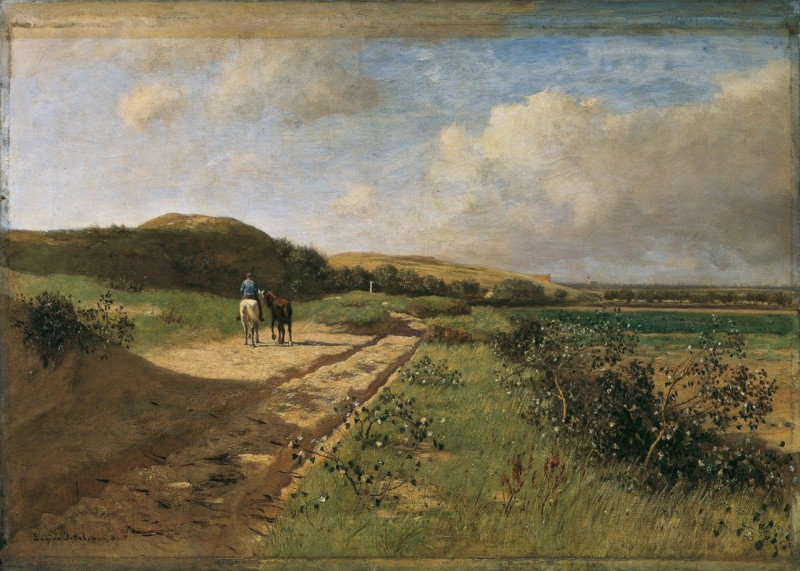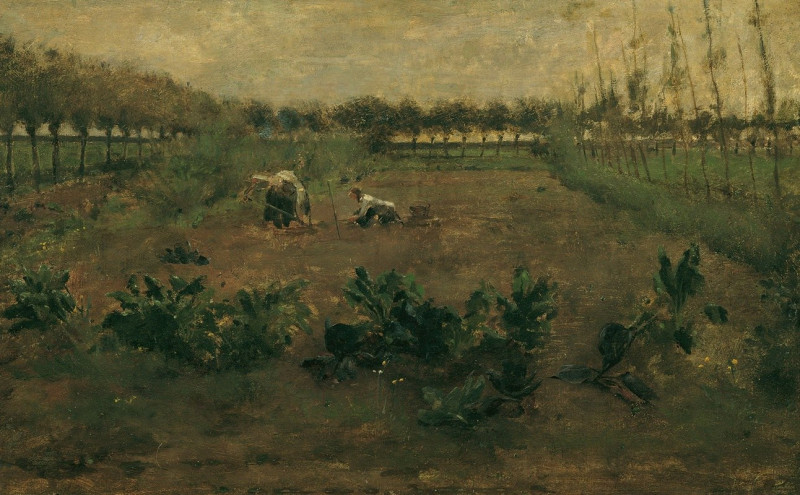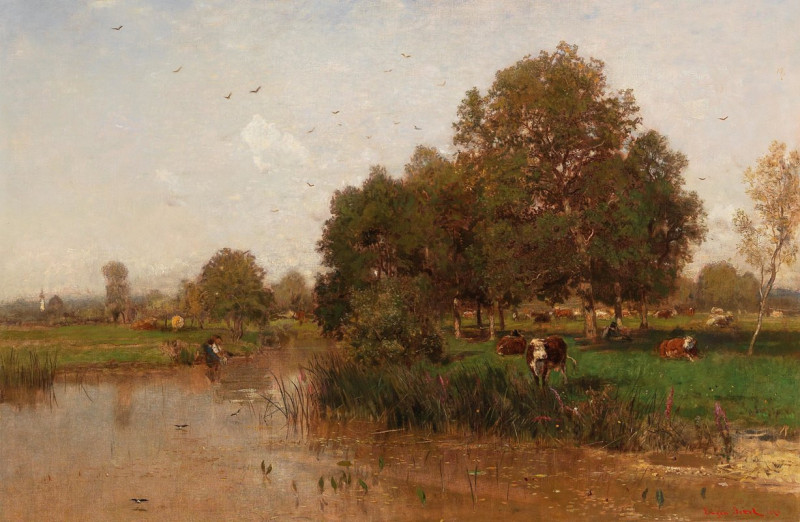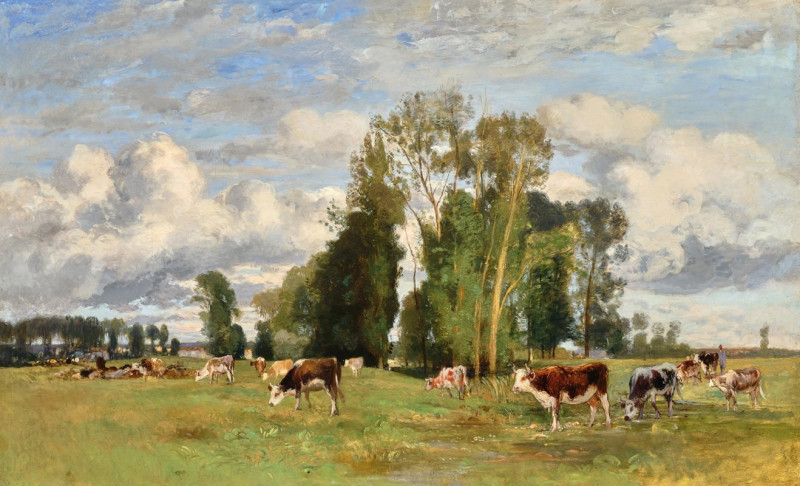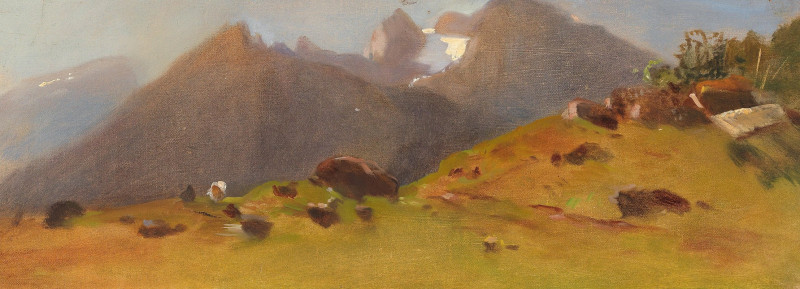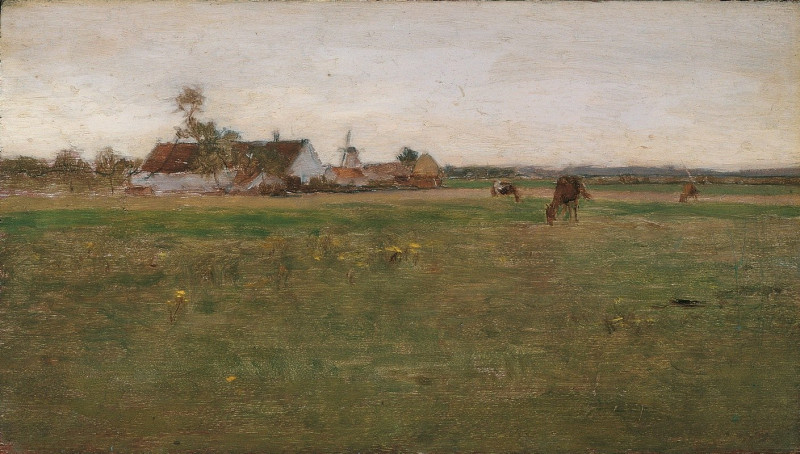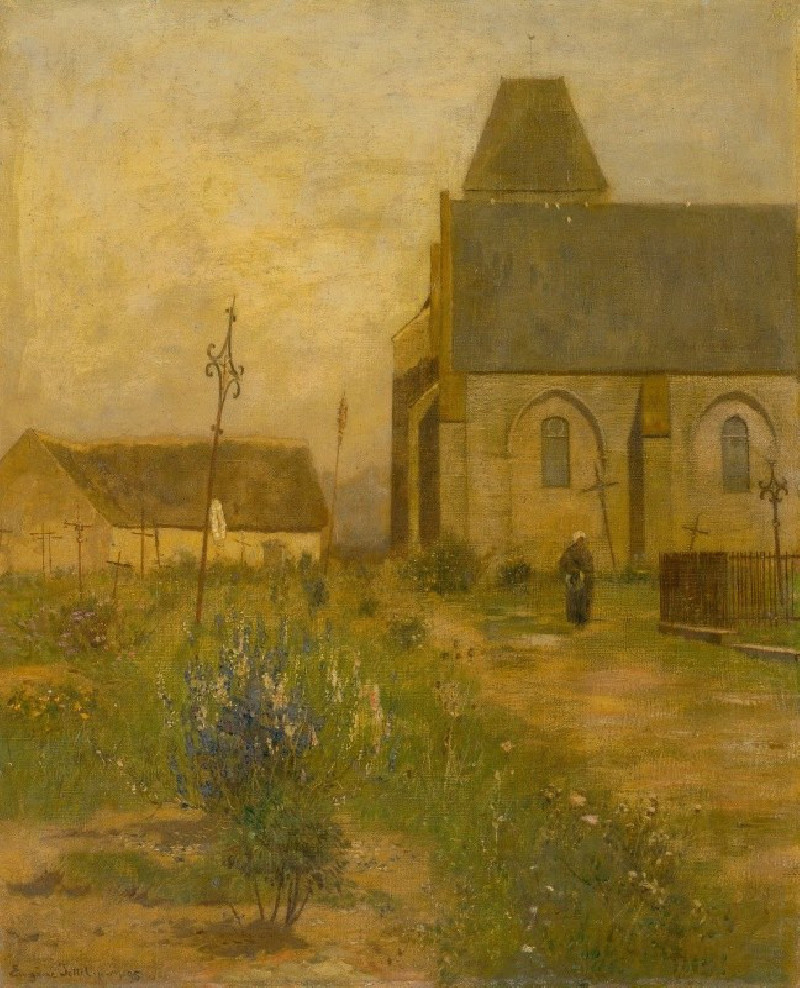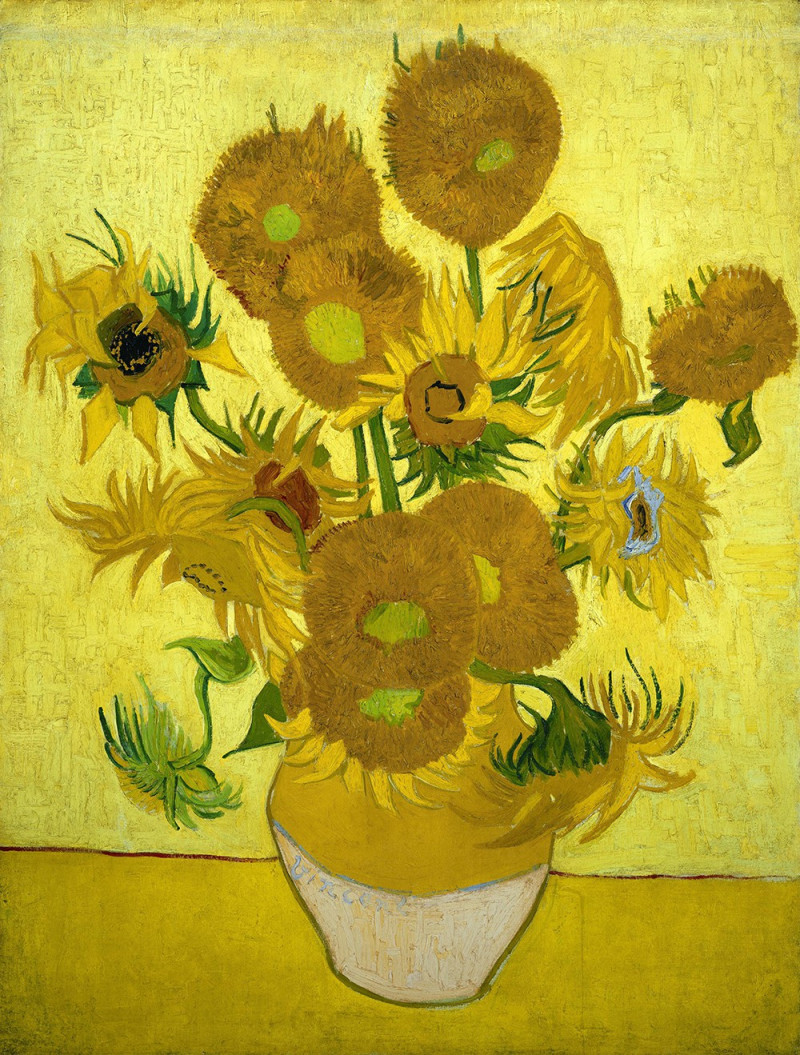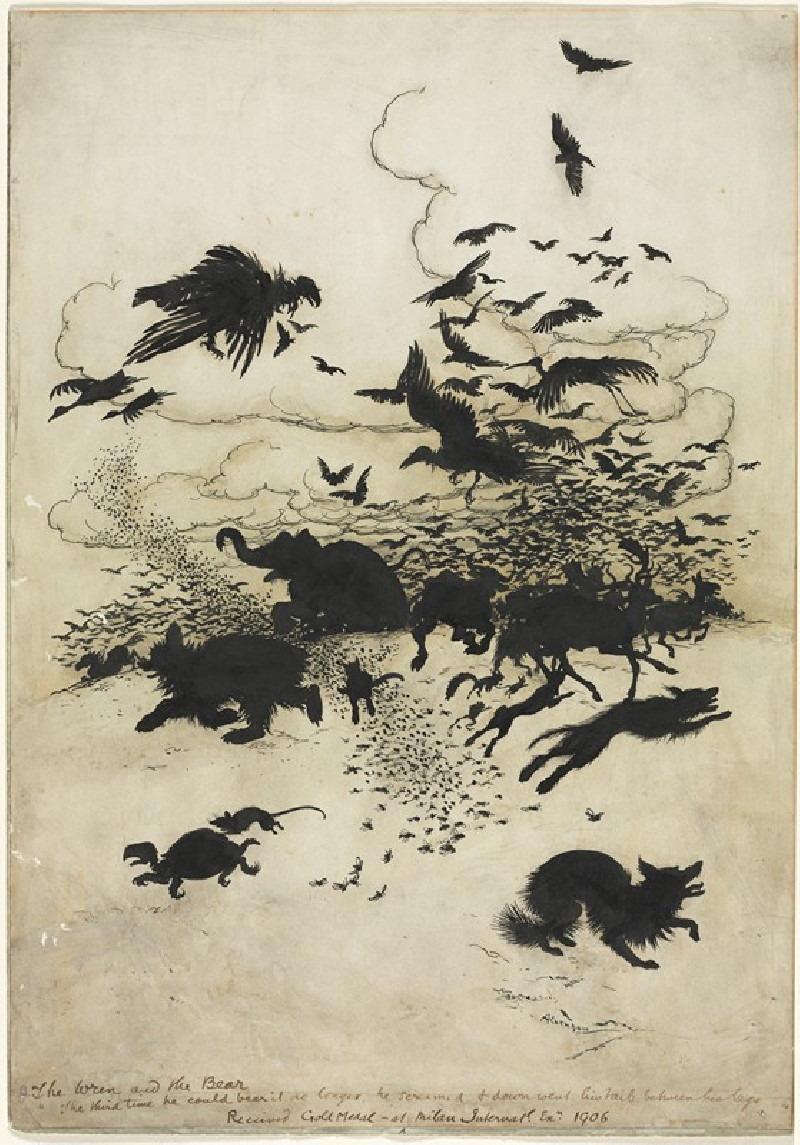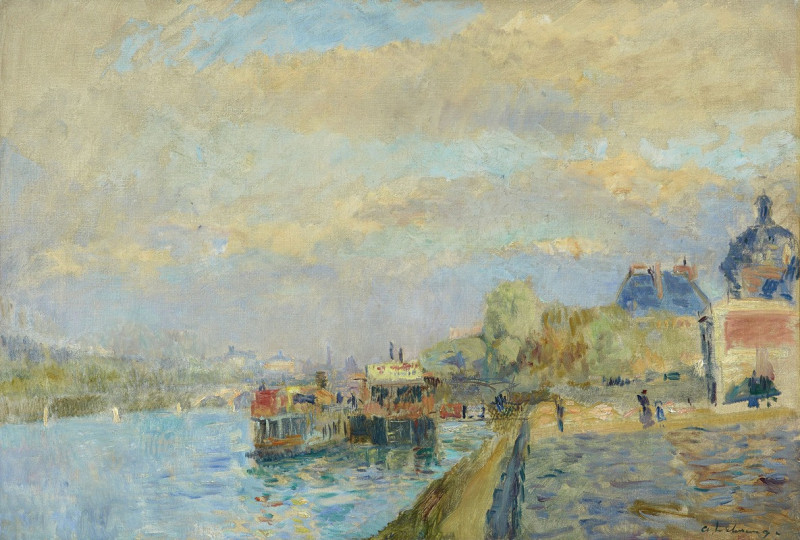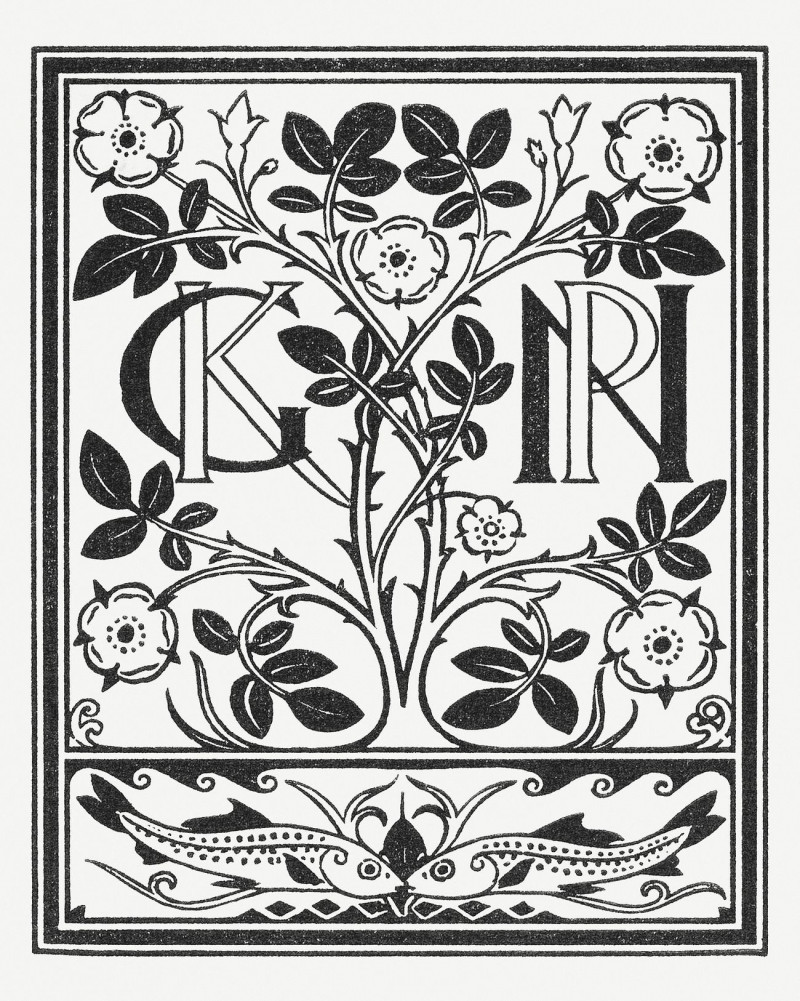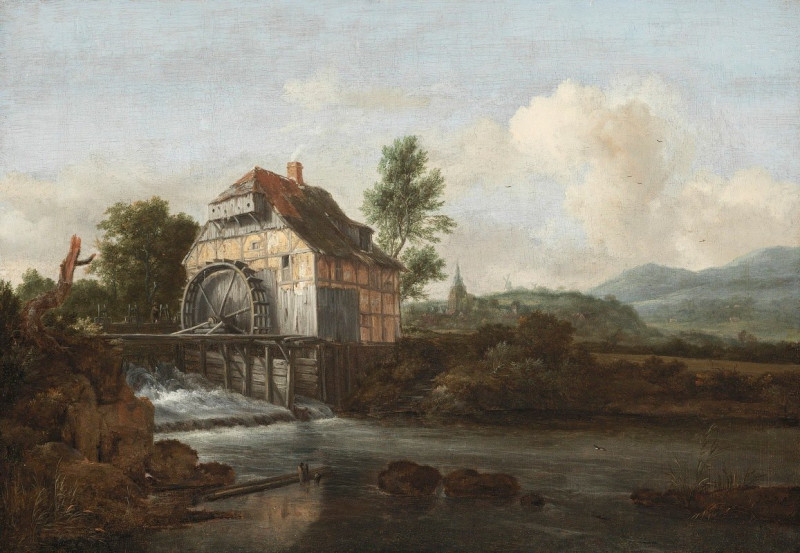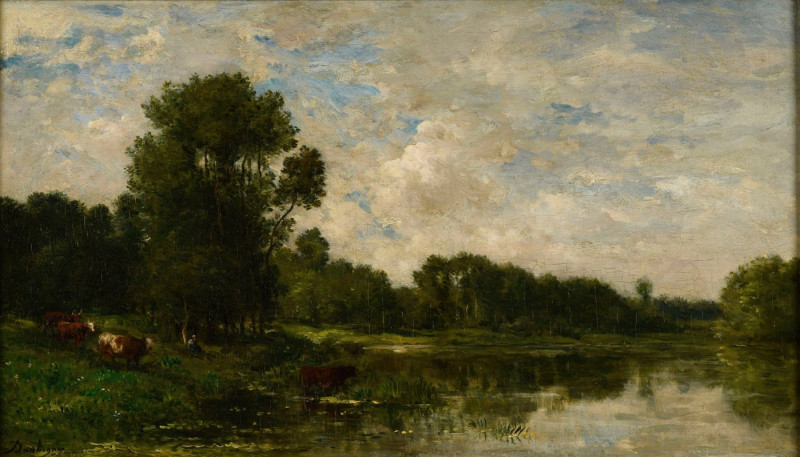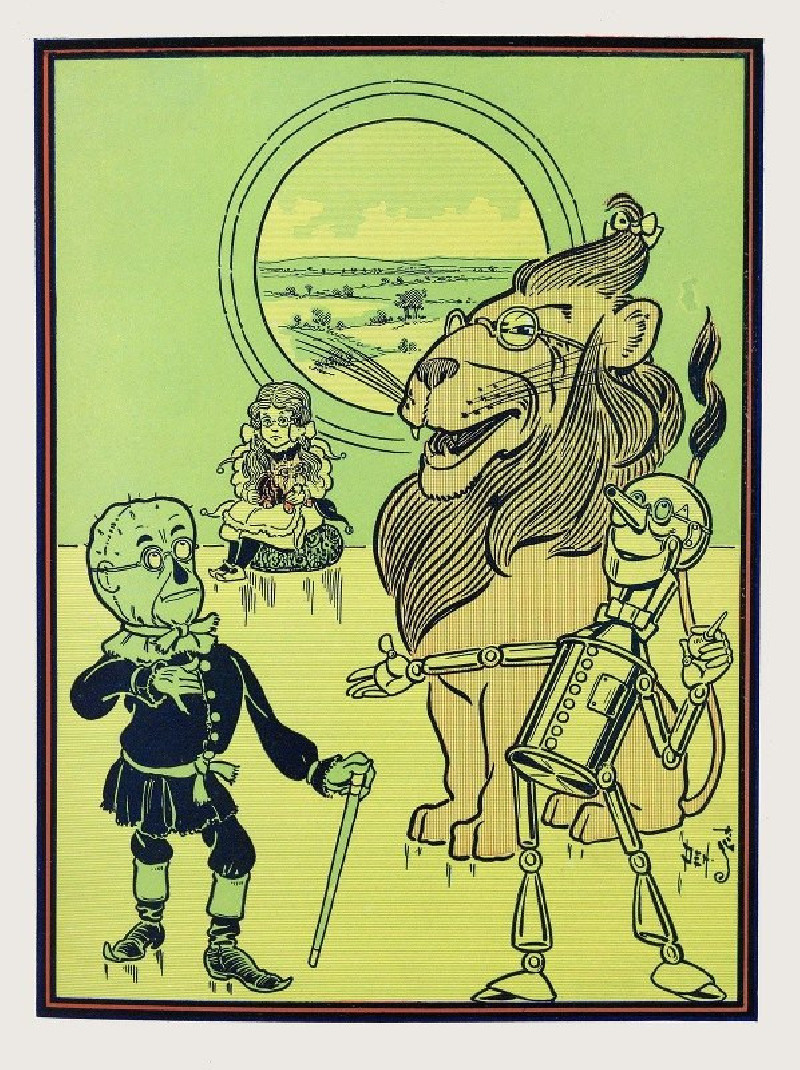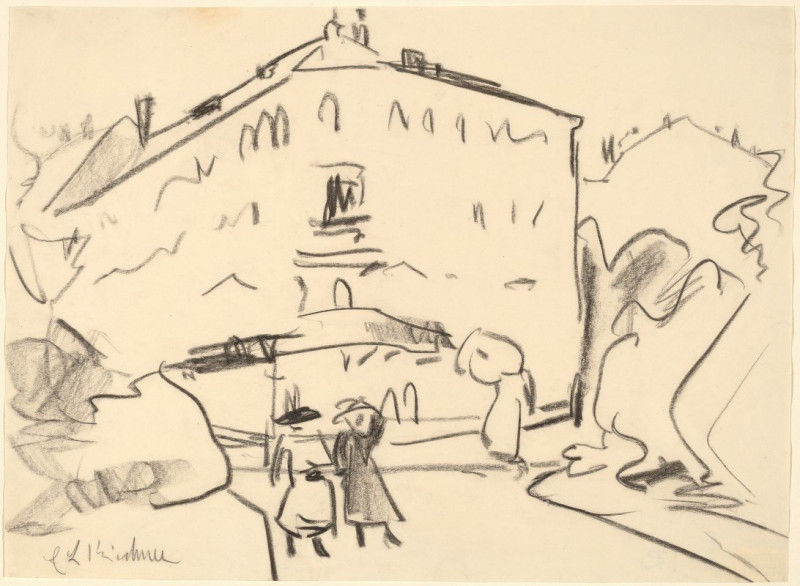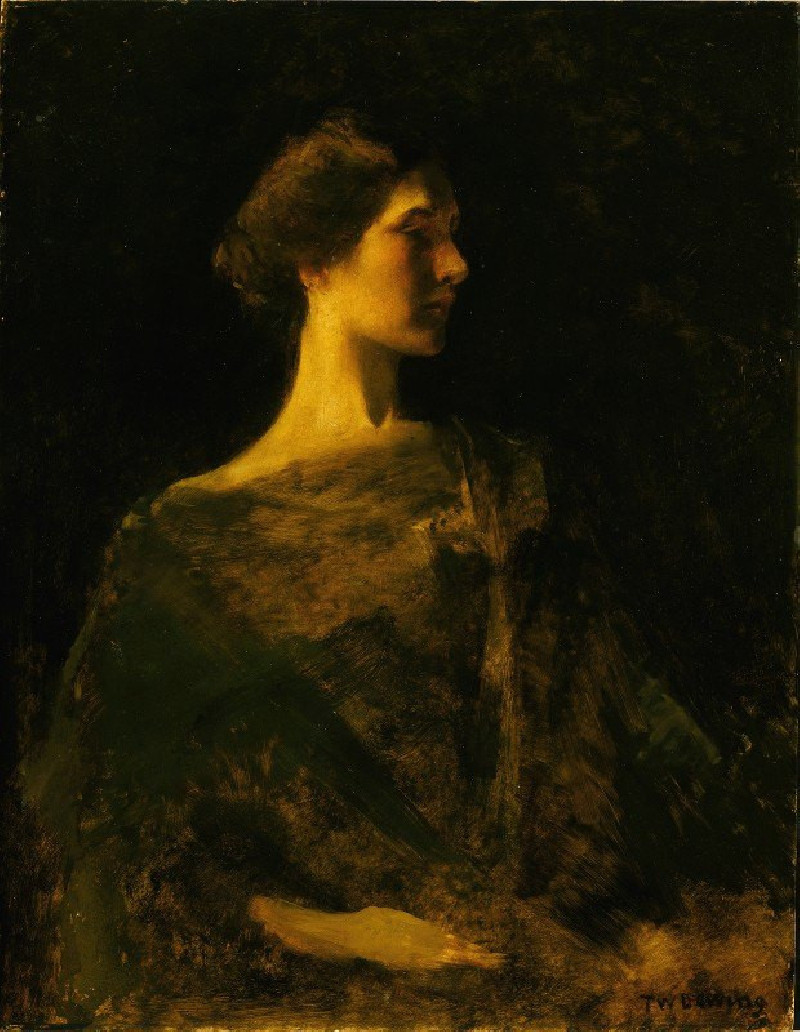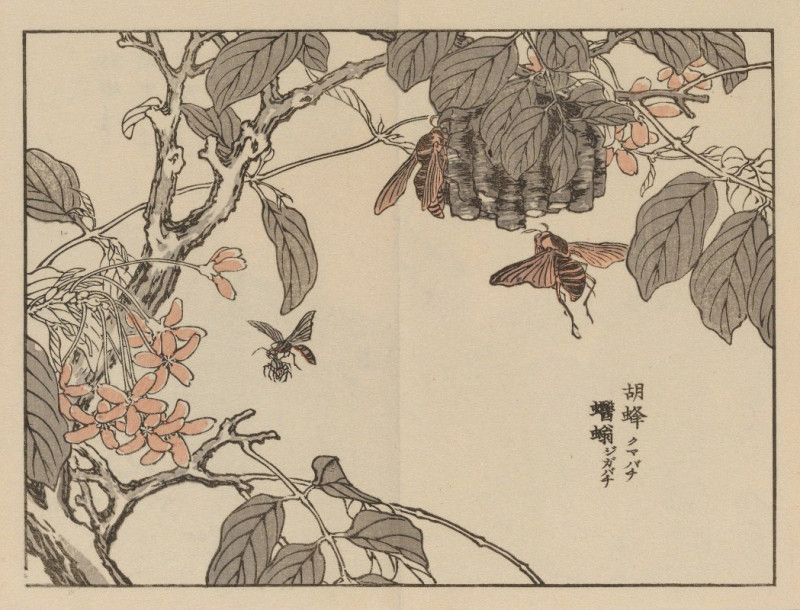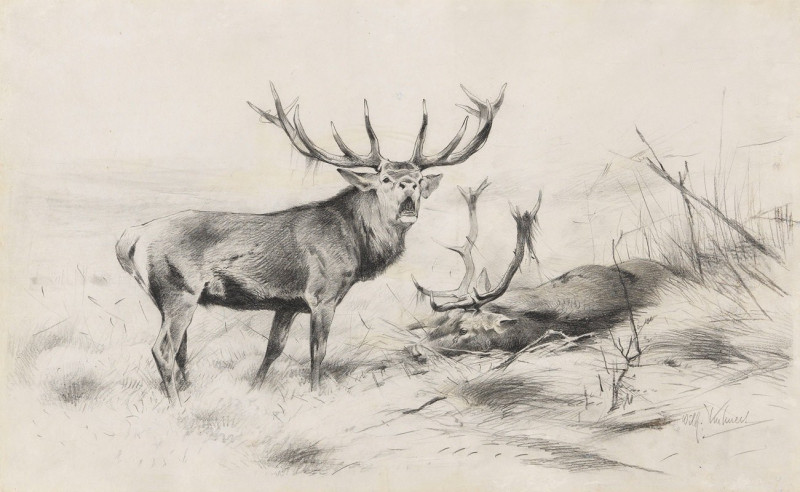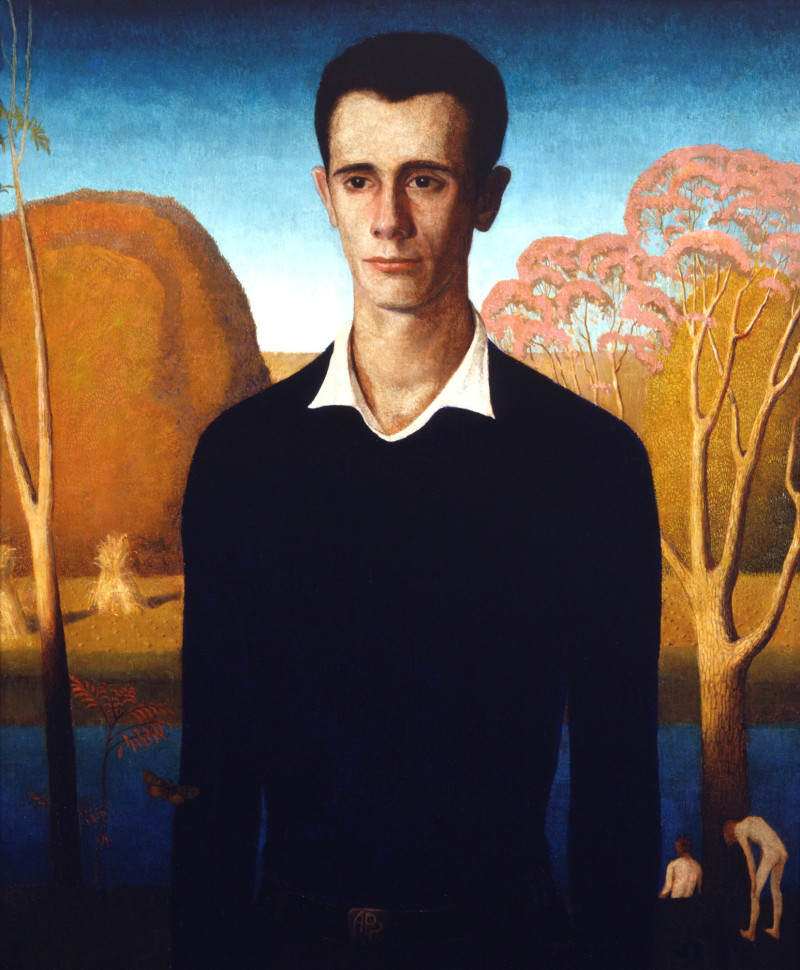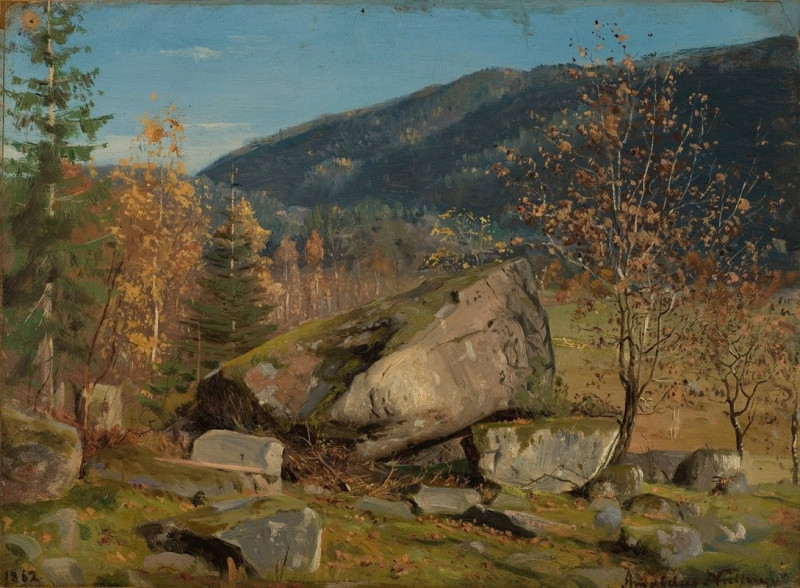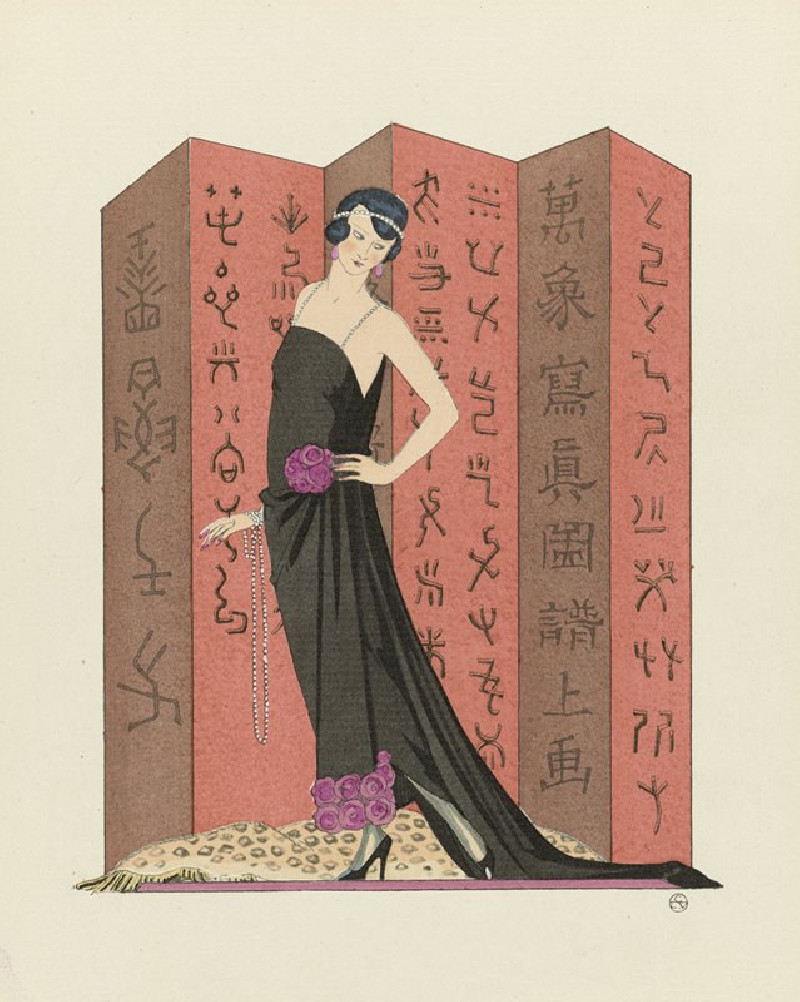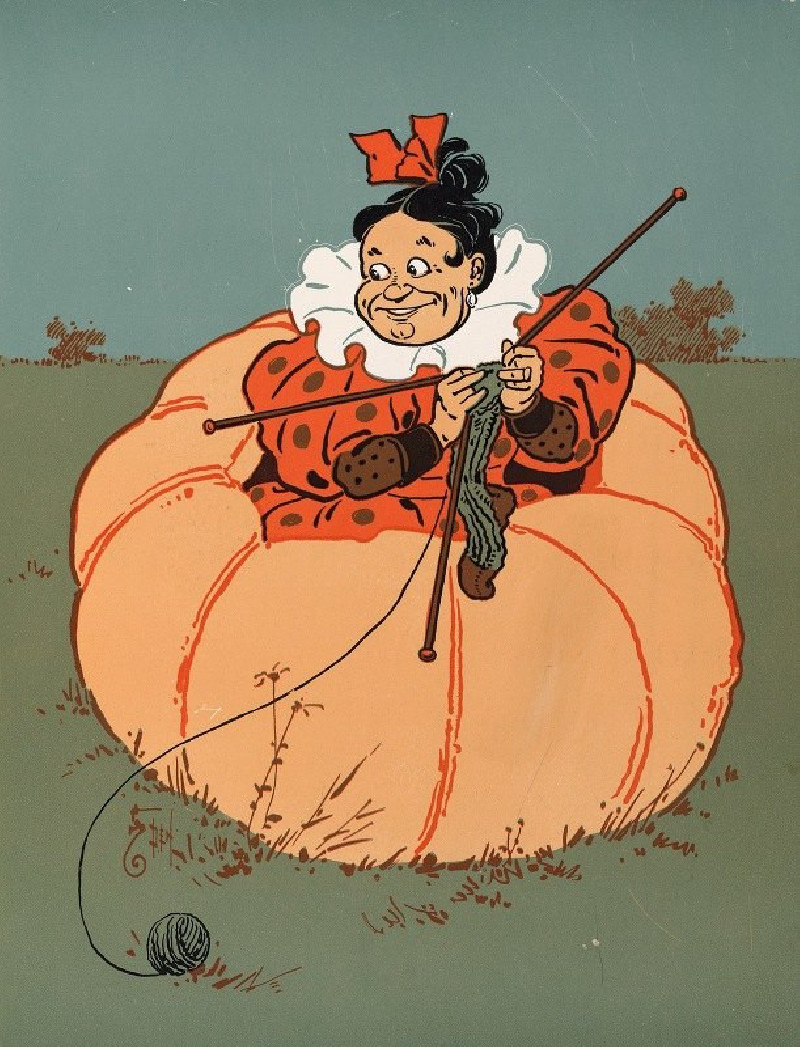Große Moorlandschaft (1879)
Technique: Giclée quality print
Recommended by our customers
More about this artwork
Discover the serene landscape of "Große Moorlandschaft," painted by the distinguished artist Eugen Jettel in 1879. This evocative painting captures the expansive beauty of a moorland under a majestic, cloud-filled sky. Jettel’s mastery in landscape artistry is evident through his delicate handling of color and light, which vividly portrays the vastness and quietude of the scene.In the foreground, decomposing logs and sparse, rugged vegetation set a moody and slightly forlorn tone, suggestive of the enduring struggle and beauty of natural landscapes. The presence of figures working in the distance adds a human element, creating a narrative of life intertwined with the wild, untamed environment. Pools of water reflect the sky, acting as mirrors that emphasize the vast overhead expanse, while a flock of birds dynamically sweeps across the sky, perhaps signaling the changing weather or the passage of time.This painting not only reflects Jettel’s skill in capturing the essence of natural landscapes but also invites viewers to reflect on the interaction between humans and nature.
Delivery
Returns
Richard Alfred Eugen Jettel (20 March 1845 – 27 August 1901) was an Austrian painter, producing mainly landscapes. He studied at the Vienna Academy and moved to Paris in 1873, before moving back to Vienna in 1897 and serving as a co-founder of the Vienna Secession. He was made a Knight of the Légion d'honneur in 1898.

